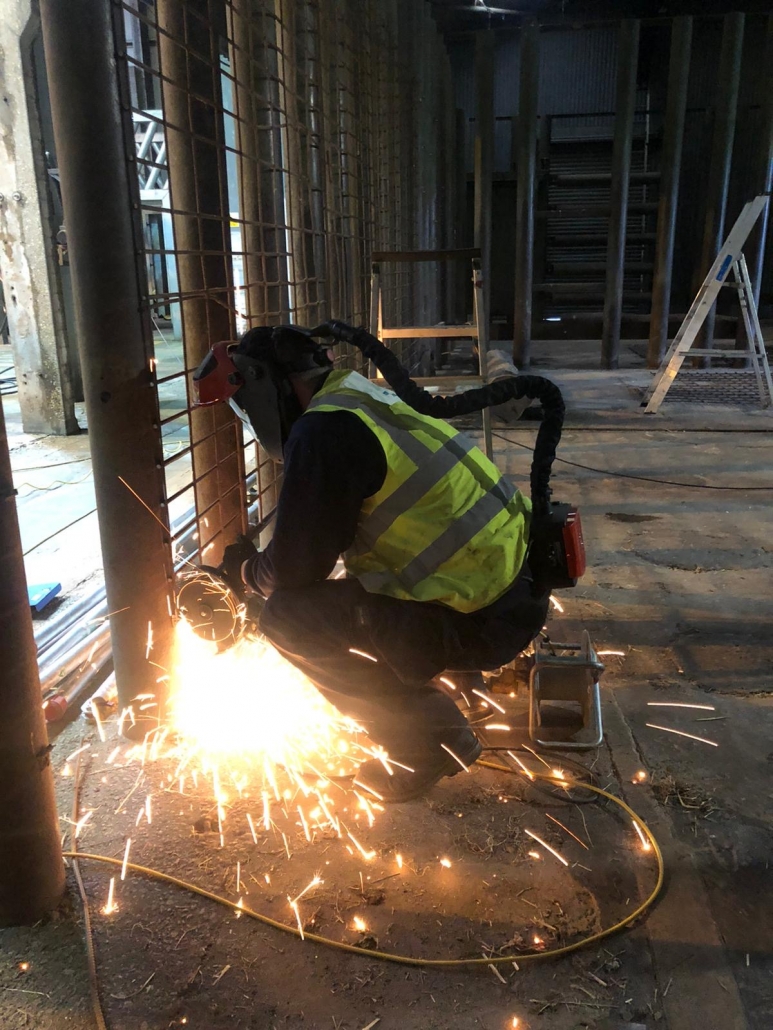Fourth SSIP CHAS Accreditation ‘in the bag’!
We are proud to have been awarded our 4th year of CHAS accreditation, demonstrating our ongoing commitment to ensuring safe workplaces, safe projects and safe systems and procedures.
We are proud to have been awarded our 4th year of CHAS accreditation, demonstrating our ongoing commitment to ensuring safe workplaces, safe projects and safe systems and procedures.
In February 2019, The Health and Safety Executive (HSE) announced that with immediate effect, it was strengthening its enforcement expectations for welding fumes. It stated that general ventilation was no longer considered as providing sufficient control or protection.
The HSE reclassified welding fumes, including those produced from mild steel, as a human carcinogen and will no longer accept any welding undertaken without suitable exposure control measures being in place, regardless of the duration.
There is no single solution to welding fume protection, it depends on the environment where the welding is being carried out and the type of work being undertaken.
In this blog we look at the different control measures which can be implemented to prevent exposure to welding fume in the workplace.
What does the law say?
By law, companies must protect workers by controlling the health risks from welding fumes. This also applies to specialist welders and workers who only do a small amount of welding.
The HSE advise that risks can be controlled in the following ways:
What do companies need to do to ensure compliance?
In response to this new guidance from the HSE, welding companies are required to review their risk assessments to evaluate the risk and likelihood of workers inhaling welding fume, and to reflect the increased risk classification of the welding fume.
The risk assessment should take into consideration issues such as the length of time the person will be exposed to fumes for, the location where the welding is taking place and the potential coatings, platings or contamination that are on surfaces being welded or cut. Welding in confined spaces, for example, can greatly increase the risk factor, it should not be assumed that welding outside would carry a low risk factor as appropriate RPE is now a requirement.
The risk assessment and safe systems of works should be used to eliminate the risk or to substitute the welding technique or consumables. Where it is not possible to eliminate or substitute the hazard, control measures should be introduced with the objective of keeping the particulate and gaseous fume levels as low as possible.
Local Exhaust Ventilation Systems (LEV):
General ventilation is no longer considered to be adequate as offering the necessary control, the most appropriate engineering control is fume extraction using Local Exhaust Ventilation (LEV).
Most LEV systems all work in the same way, comprising a series of pipes which removes fumes and dust from the working area via an airflow, which is then filtered. While LEVs vary in scale, some are large permanent systems, while some portable, the main differentiator is the hoods which should be the right design for the process being carried out.
Respiratory Protective Equipment (RPE)
Respiratory protective equipment (RPE), such an Air Fed Welding Mask, protect workers from inhaling fumes. An Air Fed Welding Mask is battery powered and worn on a belt around the welders waist. Air is sucked into the back of the Respirator Unit, through a filter, then passed up to the welding helmet via a hose. Fumes rising up from the weld are not able to enter the welders breathing zone. Air Fed Welding Helmet provides a flexible solution; the unit can go wherever the welder goes, meaning it can be used in the workshop or for on-site welding projects.
Face Fit Testing and Staff Training
Critical to the correct and optimum use of air fed welding masks, is the face-fit testing process. All wearers of tight fitting or close-fitting face pieces require a face fit test for each mask that they wear. Ideally, face-fit testing should be carried out at mask selection stage, meaning employers can ensure the correct mask models and sizes can be purchased. It is recommended that face fit tests are repeated every 2 years, or more frequently is appropriate.
The importance of retraining employees and making them aware of the new HSE guidance cannot be underestimated. Training should include:

